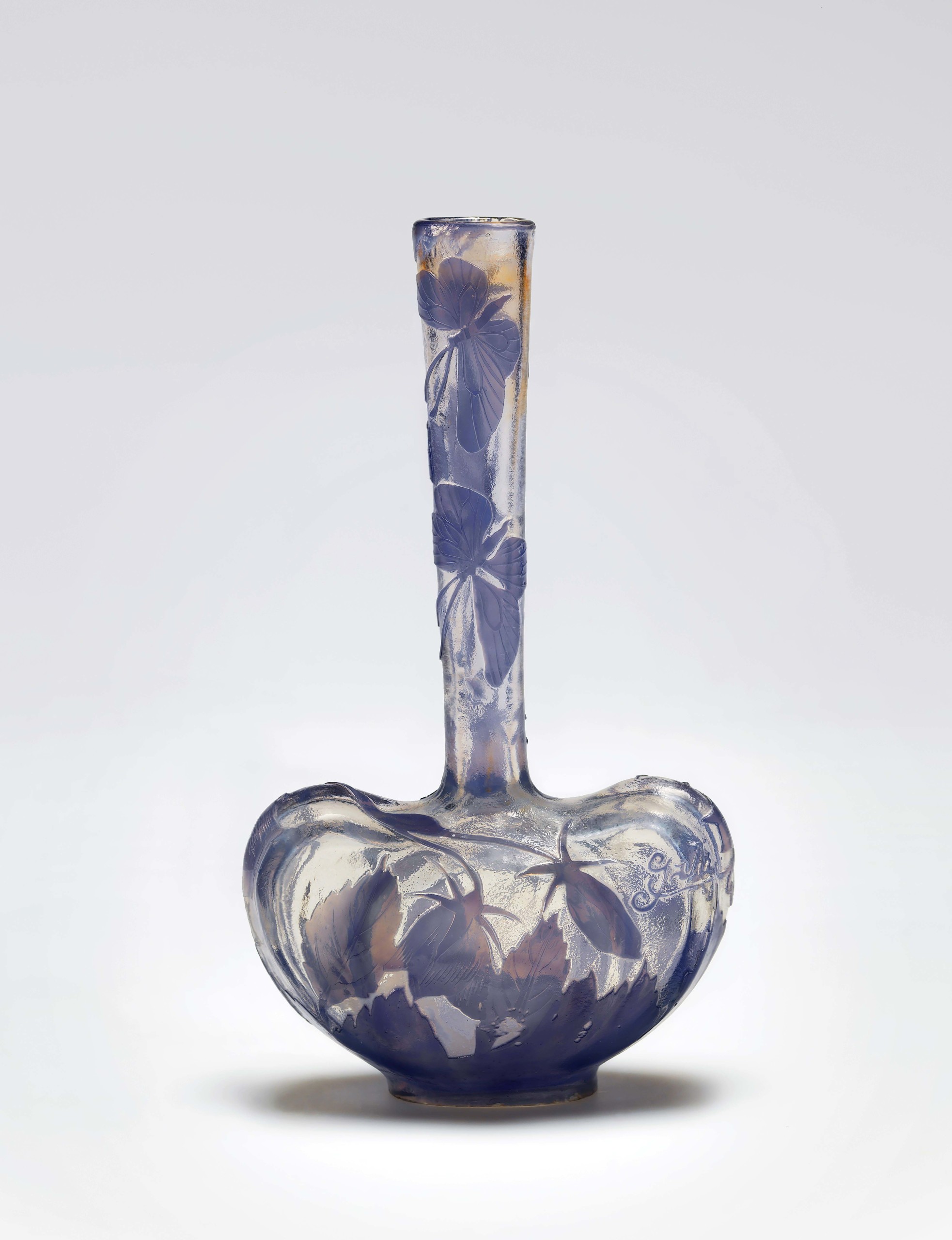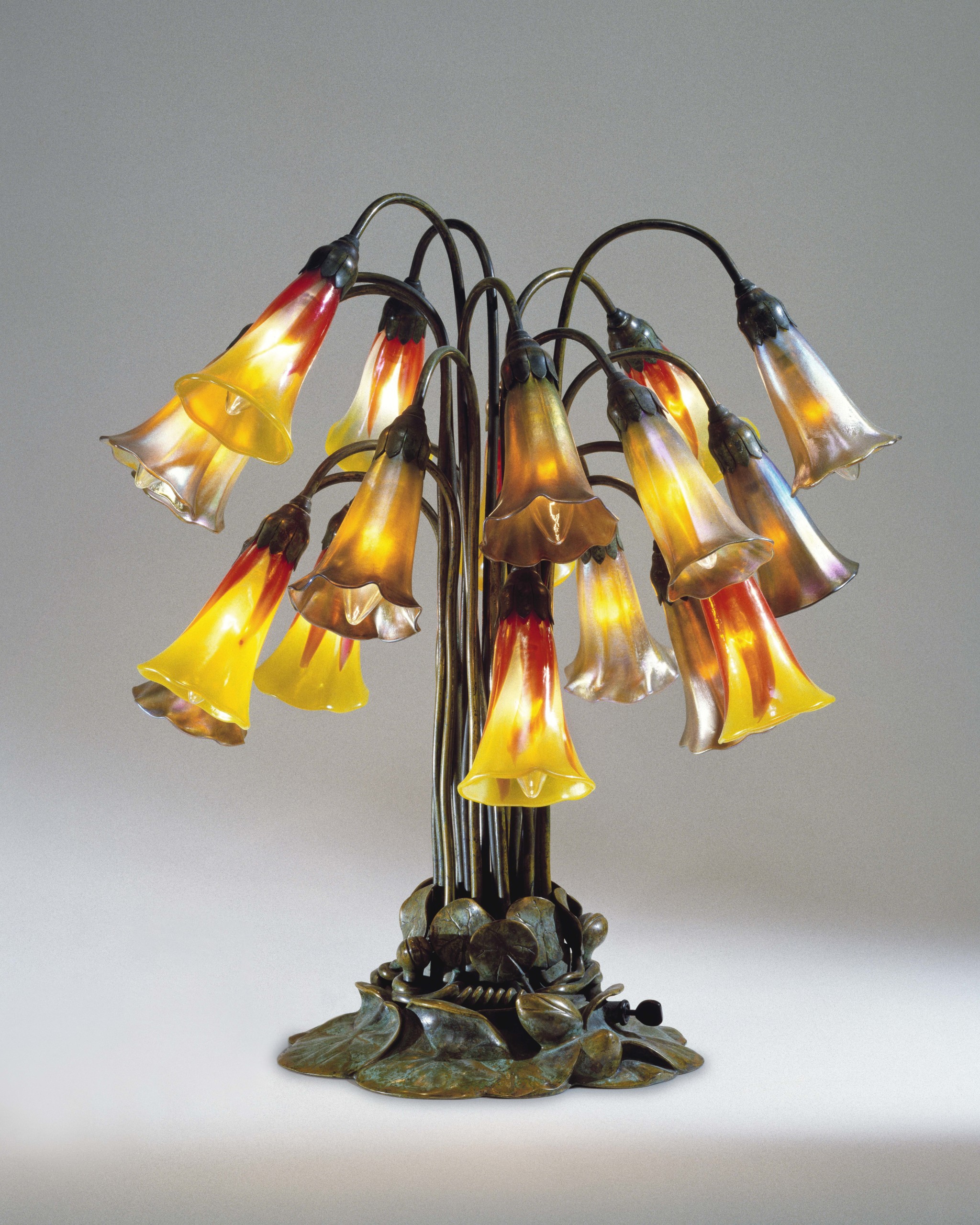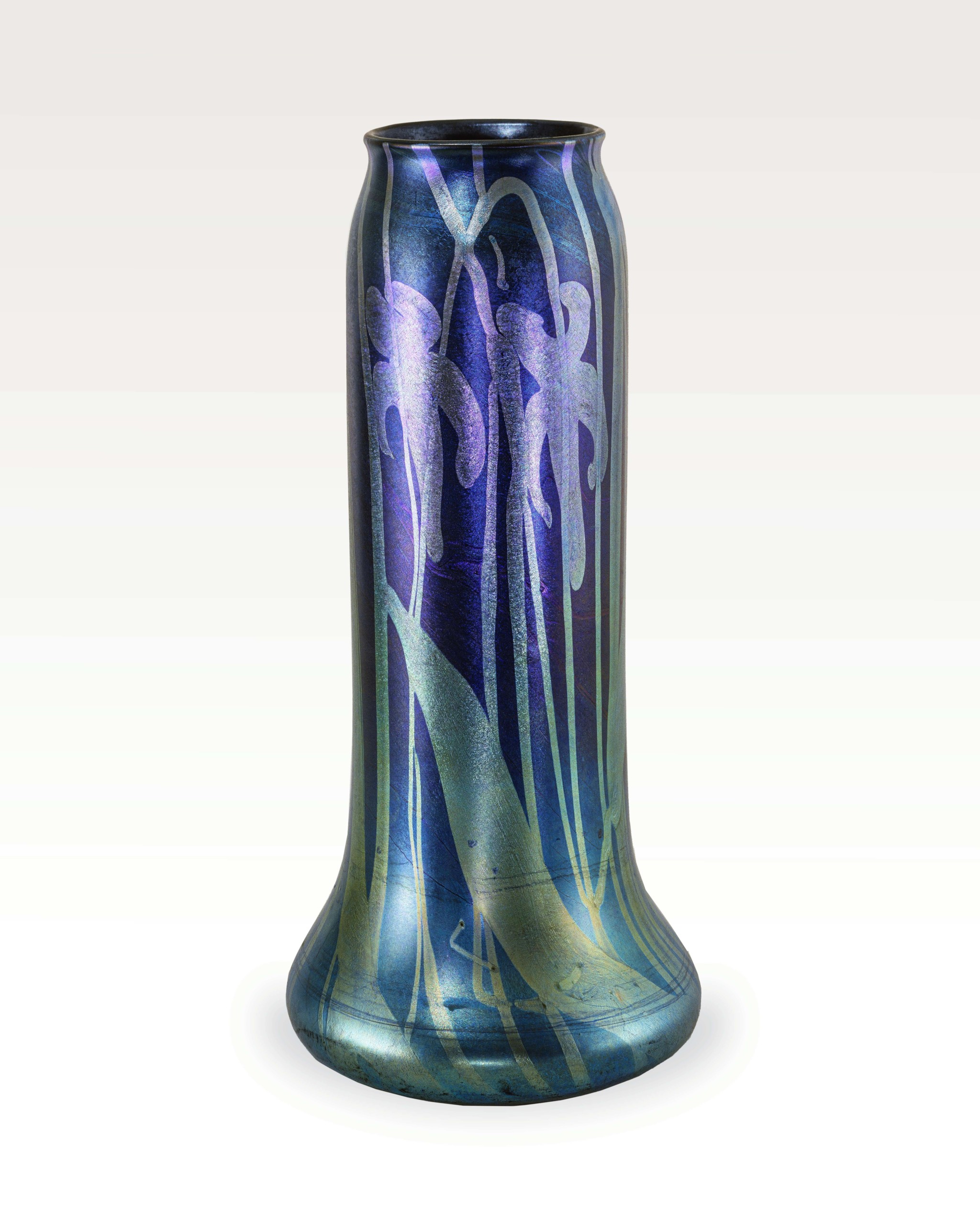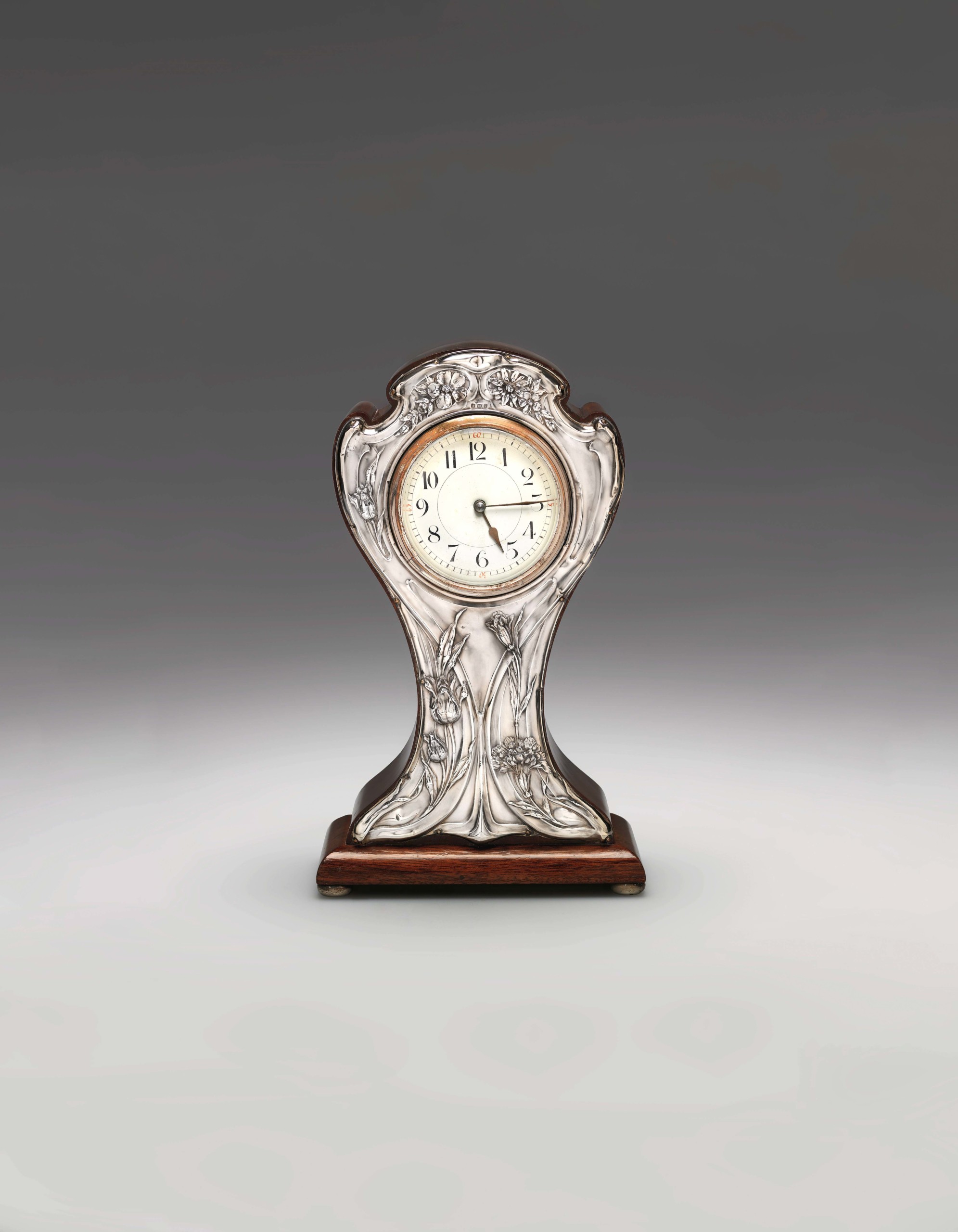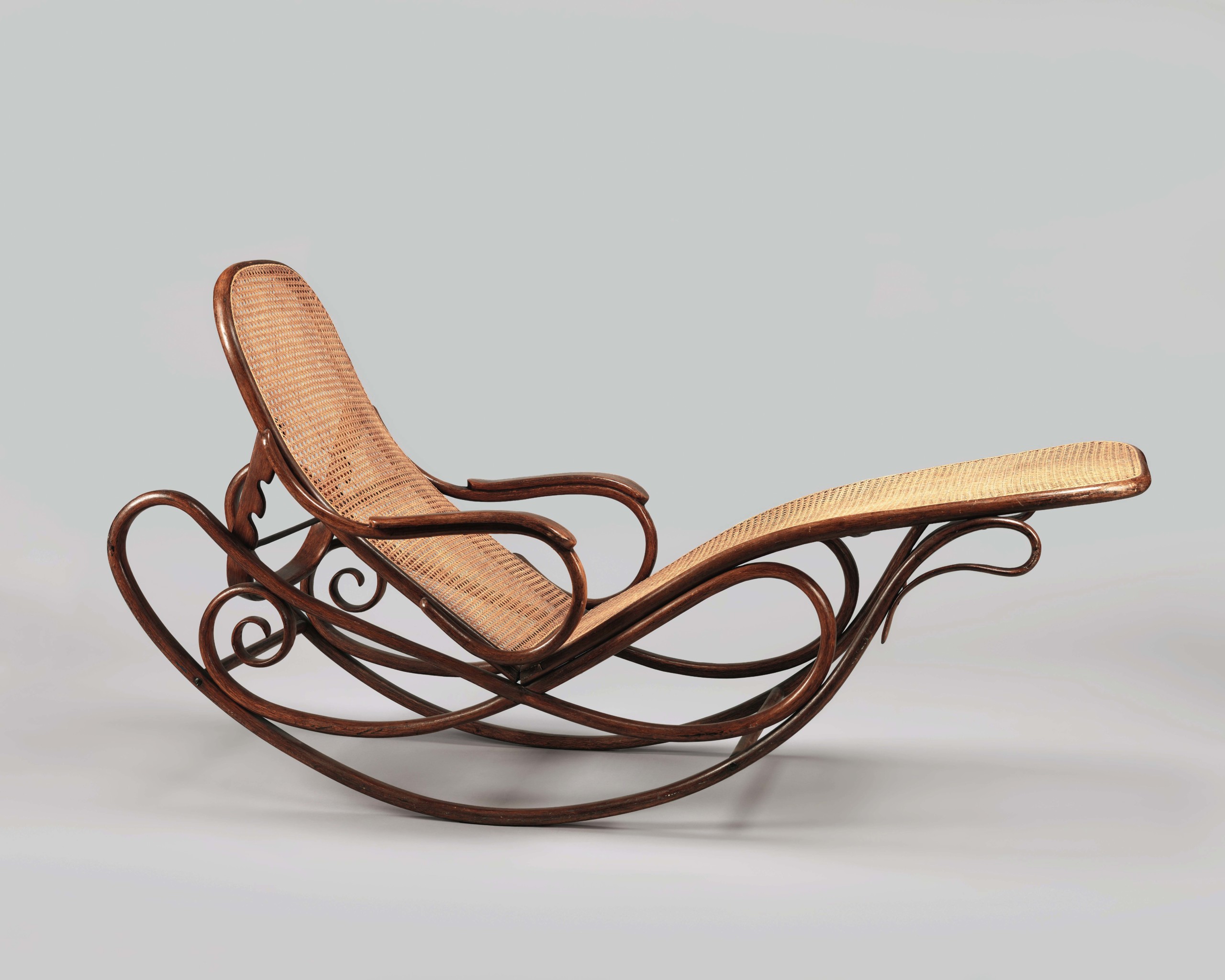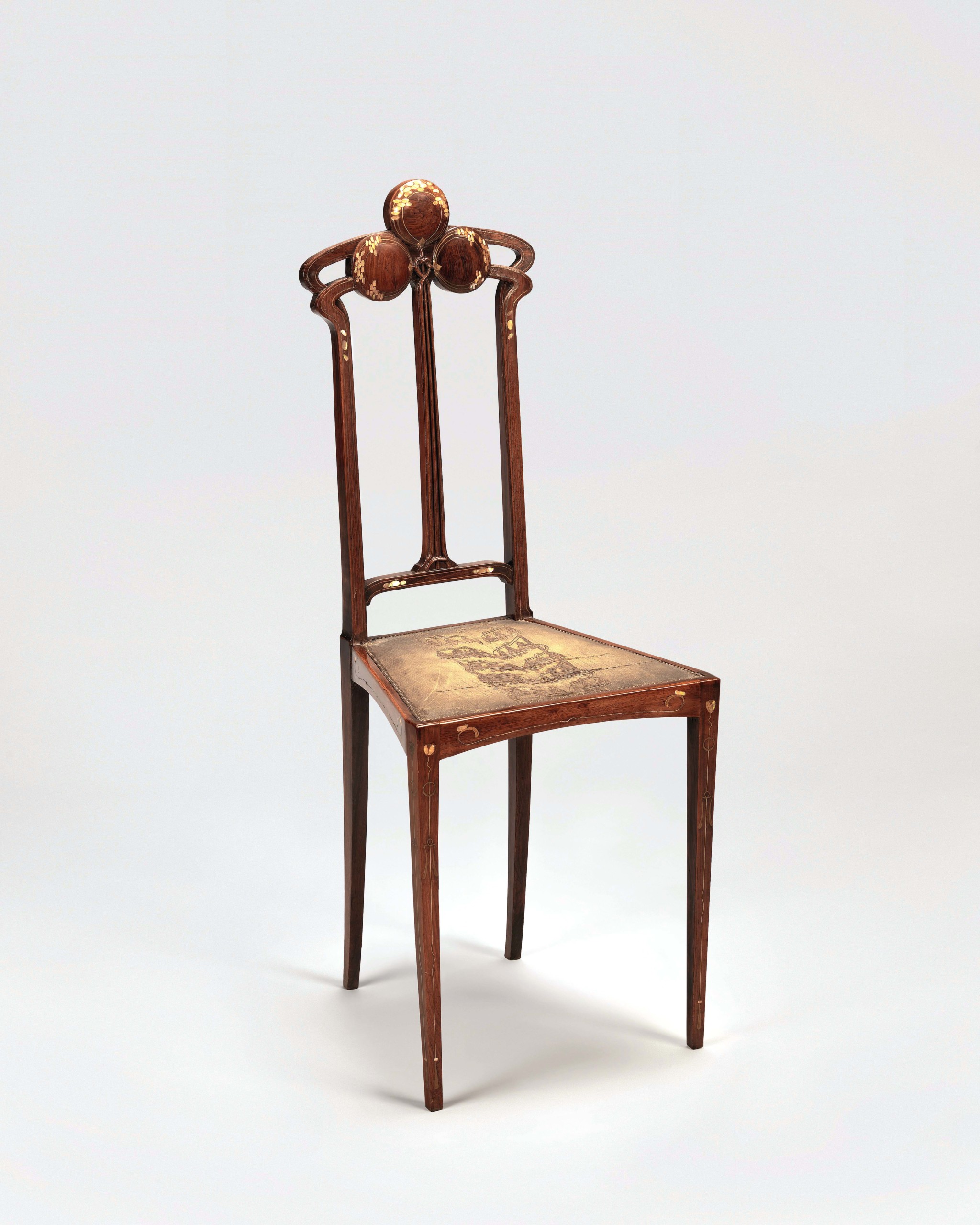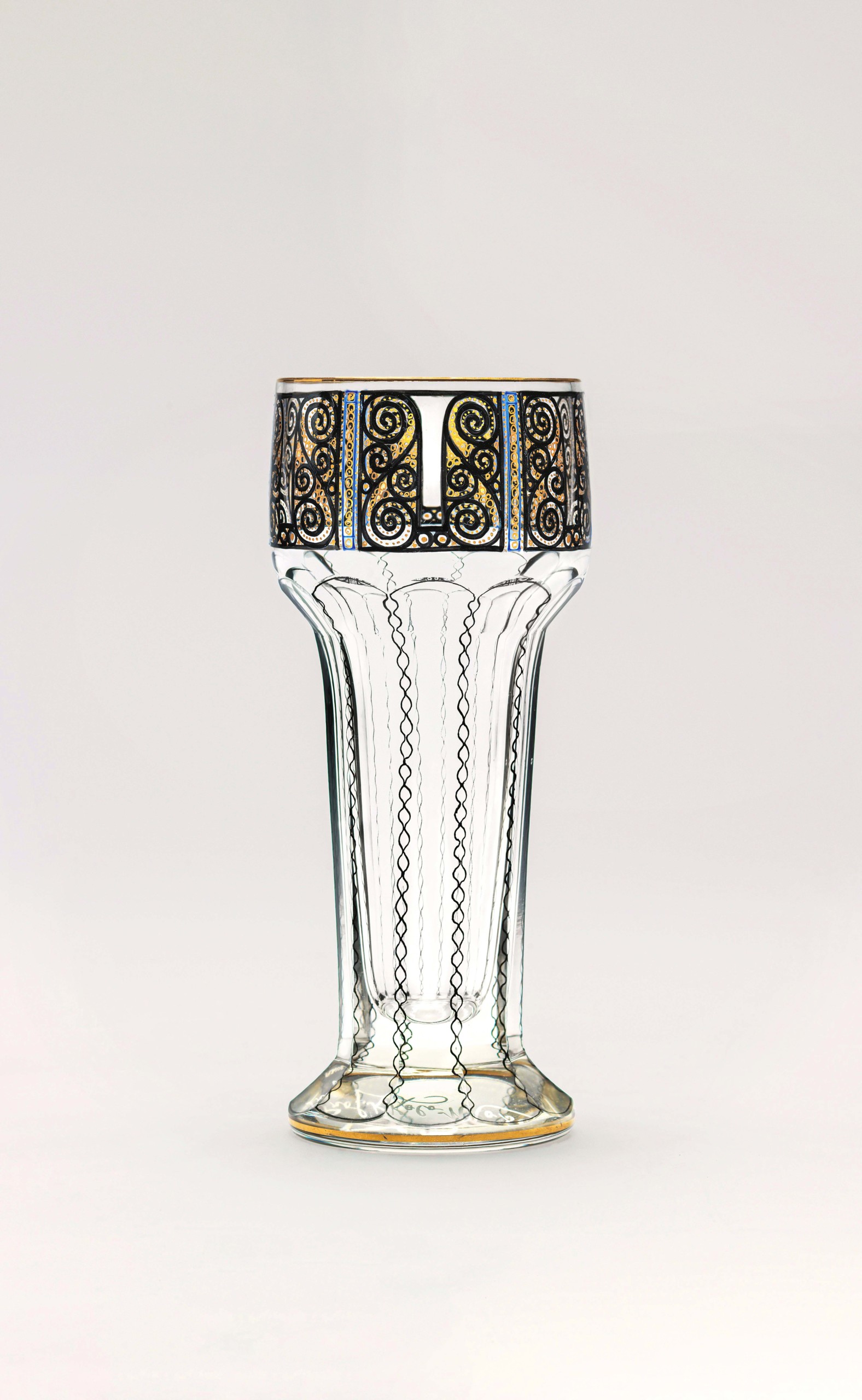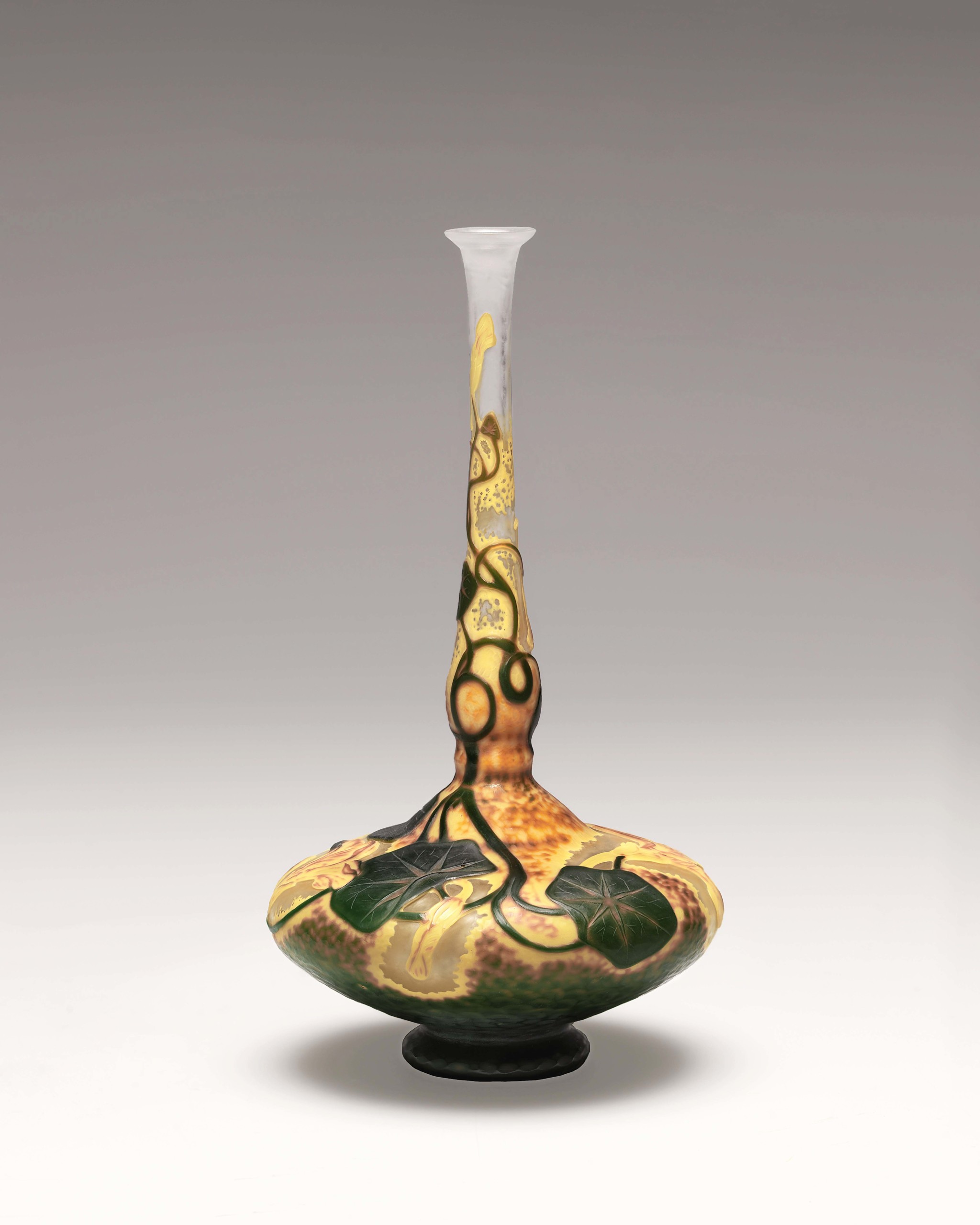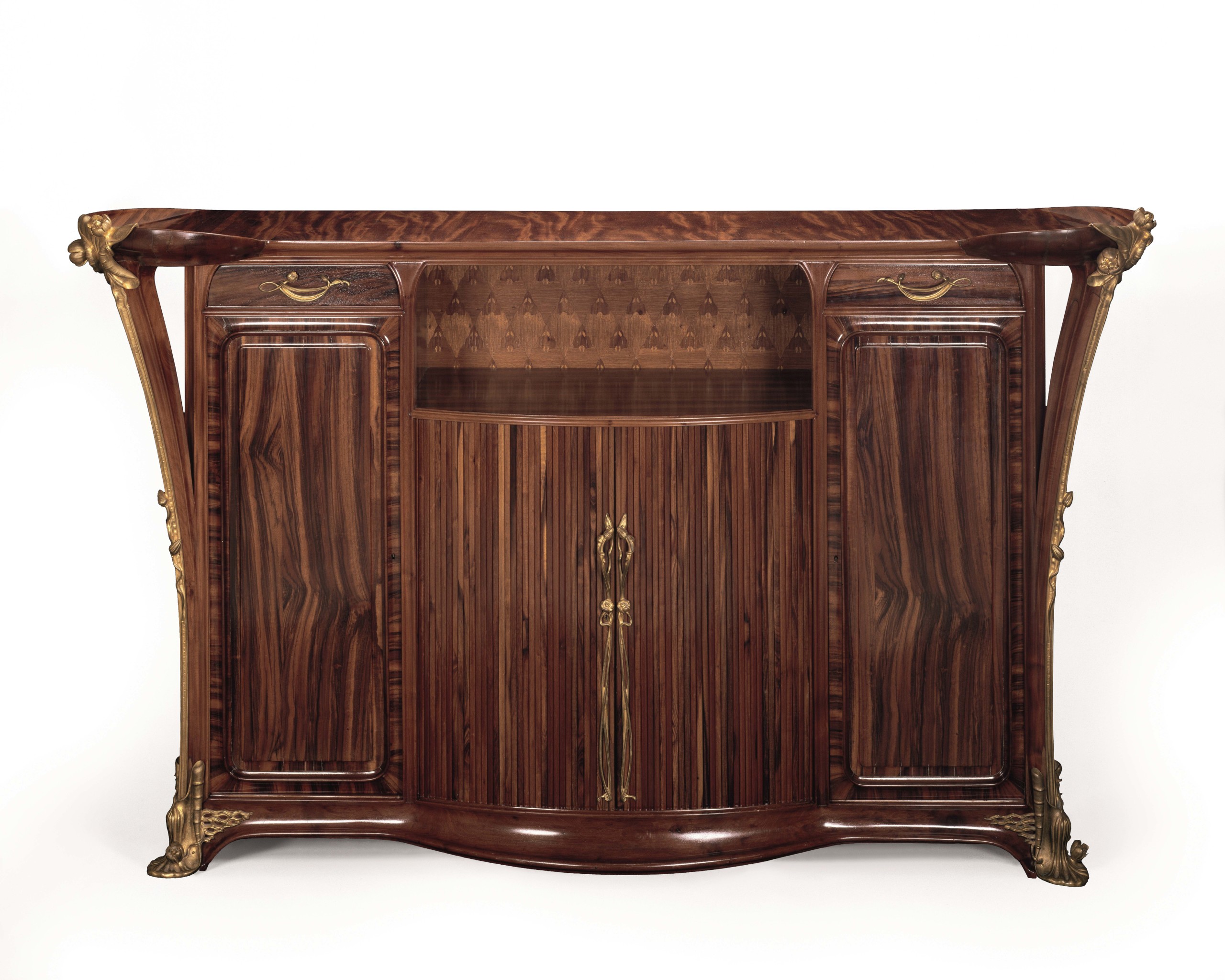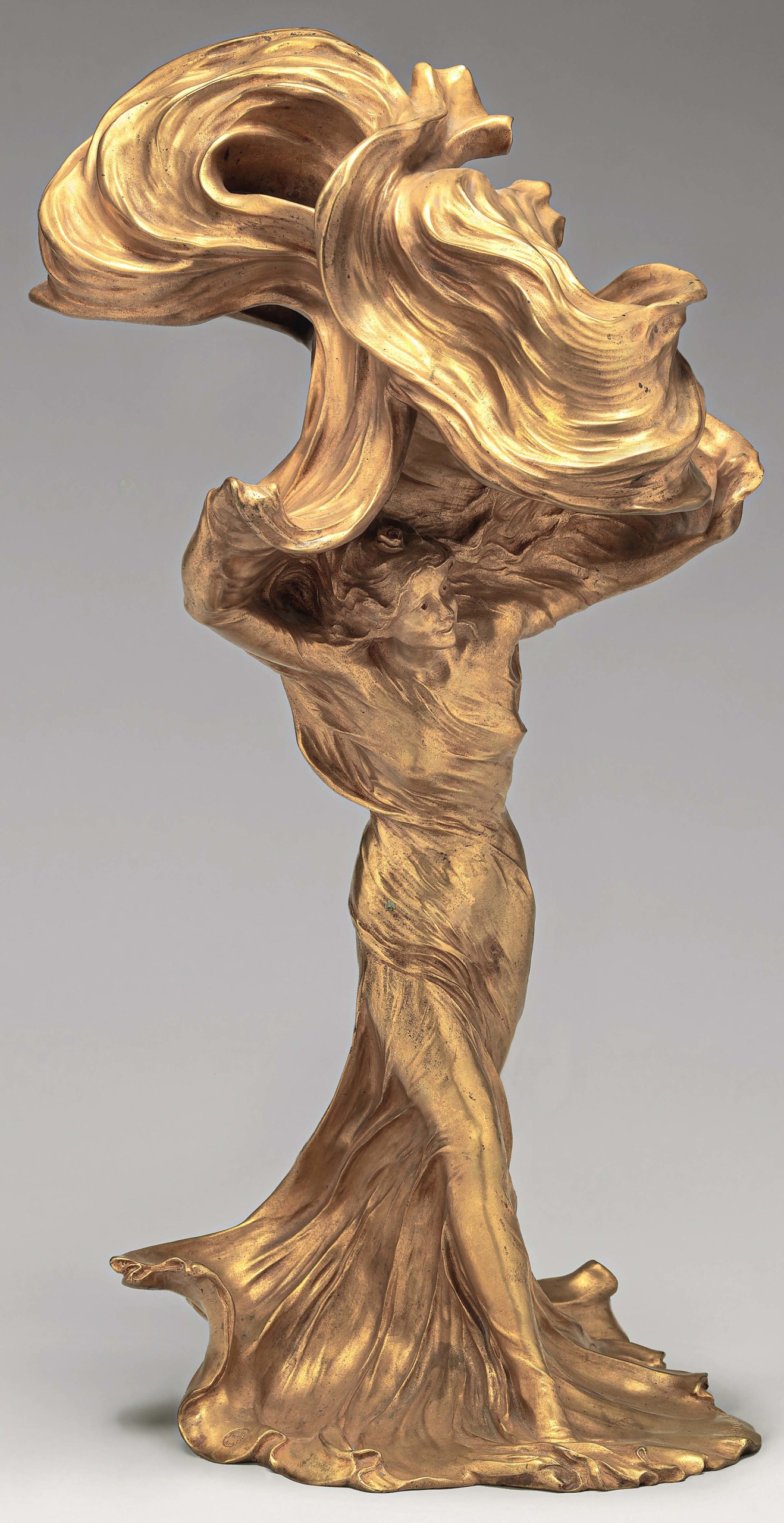
Table lamp in the form of Loie Fuller, Siot Foundry, circa 1900, gilt bronze.
By Kay Koeninger
ST AUGUSTINE, FLA. — For many, the term Art Nouveau brings up images of the passé, such as ubiquitous Tiffany lamp reproductions or, for the boomer generation, LP album covers and rock posters. Fillmore East, anyone? Some might question why we should pay any attention to Art Nouveau at all.
A new exhibition organized by the Chrysler Museum and on view at the Lightner Museum through March 15, makes a strong case for the importance of an international movement that had lofty aims, produced innovative and beautiful objects, but was cut short by the cataclysm of World War I. “The Triumph of Nature: Art Nouveau from the Chrysler Museum of Art” consists of 120 works from the collection of Walter P. Chrysler and Jean Outland Chrysler, who were the founders of the Chrysler Museum in Norfolk, Va. As smart collectors, they purchased Art Nouveau objects during the 1950s, long past the style’s heyday. Their interest encompassed furniture, decorative arts and graphic arts, and their devotion to the aesthetic was shown by using their Art Nouveau collection as home décor. Both American and European artists are well-represented, and the exhibition is accompanied by a detailed catalog filled with full-color images and scholarly essays.
As often is the case with collectors, personal experience plays an important role. In a catalog essay by Lloyd deWitt, the chief curator and Irene Leache curator of European art at the Chrysler Museum, we learn that, as a young man, Walter P. Chrysler met and befriended Louis Comfort Tiffany (1848-1933), the leading Art Nouveau glass designer in the United States. They spent a considerable amount of time together as Tiffany’s home was located close to the Chrysler mansion on Long Island. Also, as a teenager, Chrysler traveled to Japan and became knowledgeable about Japanese art. These two occurrences would obviously be major factors in his later taste for Art Nouveau.
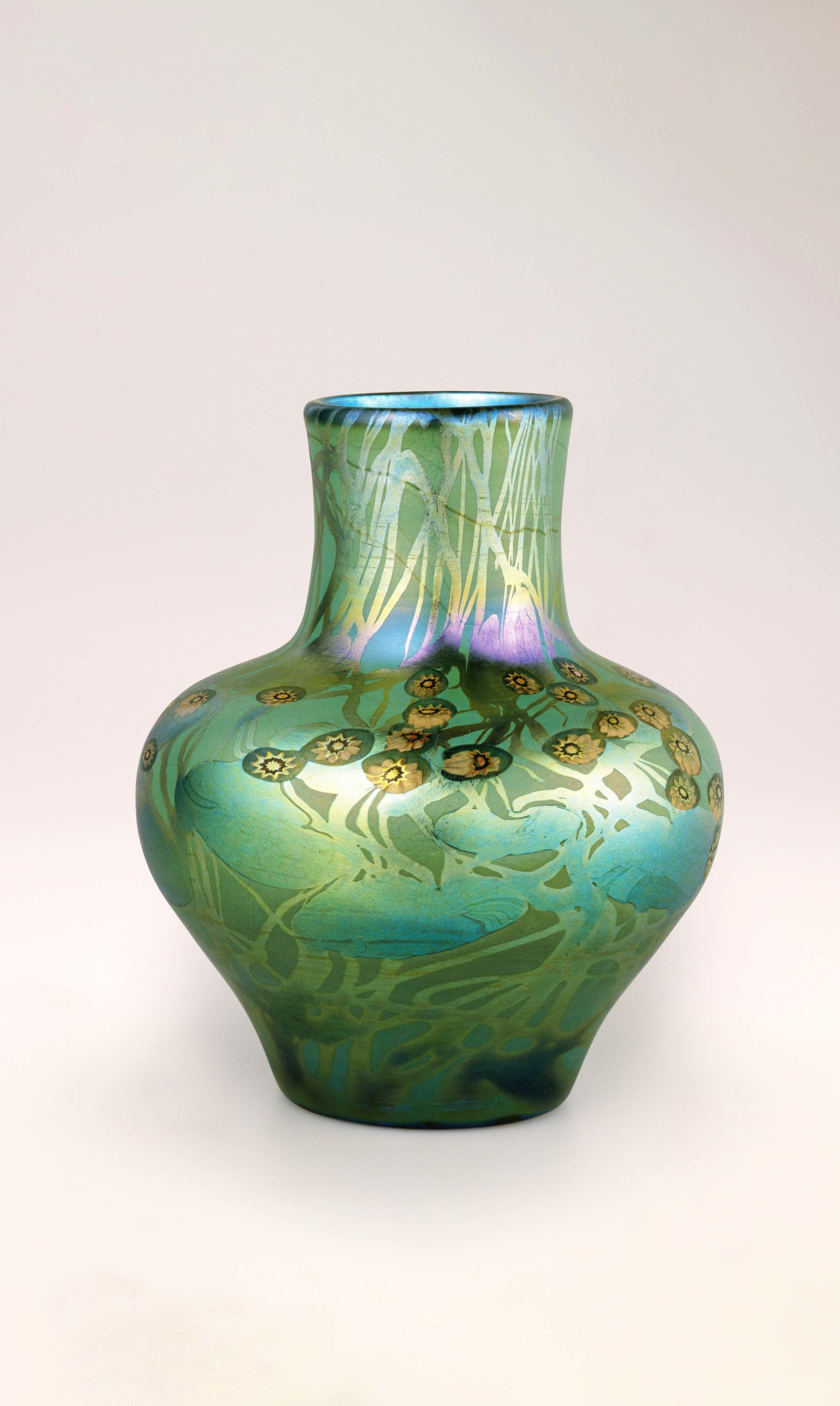
Vase with stylized Water Lilies by Tiffany Glass and Decorating Company, circa 1899-1900, blown glass with millefiori.
“The Triumph of Nature” title points to a major theme of the exhibition: the portrayal of the natural world, as well as the portrayal of the feminine form, which was closely linked to nature during the fin de siècle. This was combined with a growing awareness of Japanese aesthetics, including an emphasis on nature, after the opening of Japan to the West in the Nineteenth Century. Another important element, begun earlier by the Arts and Crafts movement, was a reaction against industrialization and the mass production of decorative art and furniture. Many scholars see Art Nouveau as a reform movement, with its call for new forms and rejection of the historical revivalism that marked the Victorian era.
It comes as no surprise that glass is well-represented in the exhibition. Glass was a much-loved Art Nouveau medium, and it is a notable part of the Chrysler Museum collection. The United States’ most well-known contributor to Art Nouveau was Tiffany, who was as popular in Europe as in his home country. The catalog essay by Carolyn Swan Needell, the Carolyn and Richard Barry curator of glass at the Chrysler Museum, outlines how Tiffany’s fame spread internationally due to the efforts of the Parisian art dealer Siegfried Bing, whose “Maison de l’Art Nouveau” was a center for dissemination of the style in France and the rest of Europe. A prime example of Tiffany glass in the exhibition is “Vase with Stylized Water Lillies,” circa 1899-1900. The fluid form of the blown glass is enlivened by iridescent greens with touches of gold. An asymmetrical arrangement of the water lily blossoms is framed by random plant tendrils and points to Tiffany’s interpretation of Japanese motifs.
Artisans in Nancy in eastern France were important contributors to Art Nouveau, especially in glass. Emile Gallé, of the School of Nancy, oversaw the production of “Morning Glory Vase,” circa 1900-04. It is mold-blown and includes a surface enlivened by cameo carvings of three-dimensional plant reliefs. The clear glass with grey and blue touches glows with a subdued, jewel-like palette.
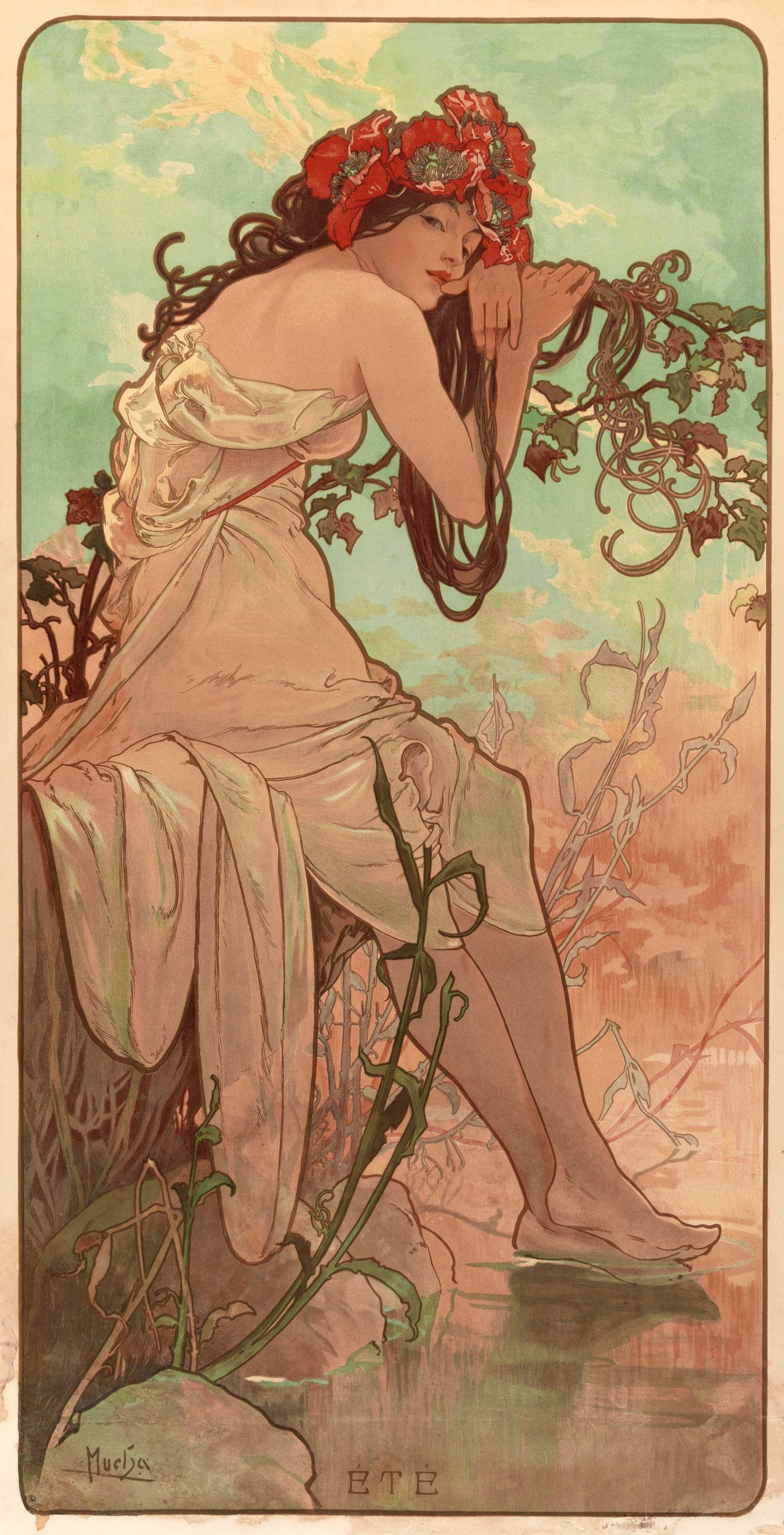
“Summer” by Alphonse Mucha, 1896, color lithograph.
Instead of painting, the two-dimensional formulation of Art Nouveau was primarily expressed in the graphic arts, facilitated by the advances in color printing. The exhibition includes many examples of graphic art by the Czech artist Alphonse Mucha (1860-1939). His color lithograph “Summer,” 1896, is part of a series depicting the seasons, personified by young women. The figure in “Summer” is surrounded by plant tendrils to the extent that she appears to be encased by them, and even her hair suggests curling vines. The plants, the idealized feminine form, and glowing oranges and greens explore different aspects of Art Nouveau sensuality.
The exhibition offers a valuable insight into two Art Nouveau areas that might not be as familiar to viewers as glass and graphic art. One of these is sculpture. Collector and scholar Gabriel Weisberg, in his catalog essay, explores the importance of Siegfried Bing to the Art Nouveau movement. In fact, Walter Chrysler collected many objects that were shown at Bing’s pavilion at the Paris Exposition Universelle in 1900. These objects include German artist Hans Peter Orivit’s (1856-1945) “Mermaid Candelabra,” 1900, which is silverplated tin and cut crystal. More abstract than two-dimensional depictions of the figure in Art Nouveau, the mermaid’s hair tendrils form the undulating branches of the candelabra. The branches are asymmetrical, a hallmark of the Art Nouveau aesthetic, and appear as if they are floating underwater.
Another example of sculpture, a lamp in gilt bronze, memorializes the popular dancer of the period, Loie Fuller. Fuller, the Taylor Swift of the Belle Epoque, is shown in motion and in the full bloom of youth, surrounded by the ethereal forms of the fabric of her twirling costume. Many elements of this work are also abstracted, with a focus on the evocative nature of texture. This sculpture, like the “Mermaid Candelabra,” points to the “old” in Art Nouveau: the depiction of the female figure as the personification of beauty, a mainstay of Western art since the Classical period. Motion and a non-static viewpoint, both hallmarks of modernism, are also expressed.
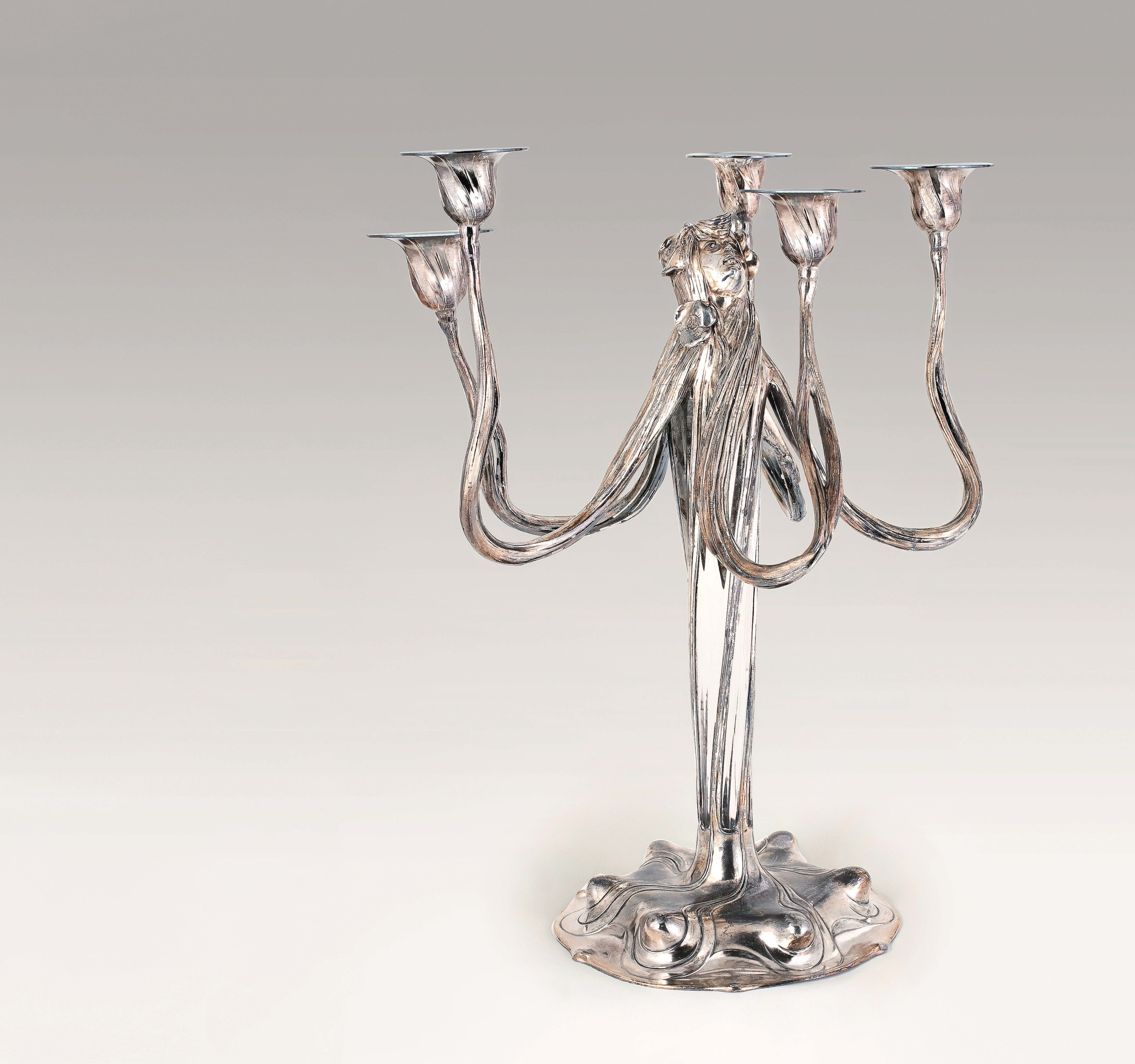
Mermaid candelabra by Hans Peter Orivit, 1900-09, silverplated tin and cut crystal.
The exhibition features many examples of furniture design, another less-known aspect of Art Nouveau. Austrian designer Michel Thonet’s (1796-1871) “Chaise Lounge,” circa 1880-83, rejects many aspects of traditional furniture, such as geometric line and historical references. It is curvilinear in all aspects, from the seat to the base. The dramatic manipulation of beechwood and cane demonstrates new processes in furniture fabrication. One wonders how the sitter would actually get up from this enveloping chair; but, then again, why would anyone want to?
While negative space is an important aspect of the Thonet chaise lounge, massive presence marks Louis Majorelle’s “Nenuphars Cabinet du Travail,” 1902. Majorelle was a leading designer in the School of Nancy. “Nenuphars” refers to the Egyptian water lily, and this motif is seen in both the rich inlay and the metal accents. In contrast to the organic and ephemeral nature of much Art Nouveau design, this furniture communicates opulence and solidity.
This exhibition convincingly shows Art Nouveau in a new light. The comprehensiveness of the collection on view does demonstrate a major aim of the movement, that of Gesamtkunstwerke, or the uniting of all arts. It effectively announced that decorative arts are not secondary and rejects the division between art and craft. This principle would later enliven modernity and major expressions of it, as seen in the Bauhaus and the oeuvre of architects like Frank Lloyd Wright. It explored new materials and made nature, especially in the form of plant life, its major focus.
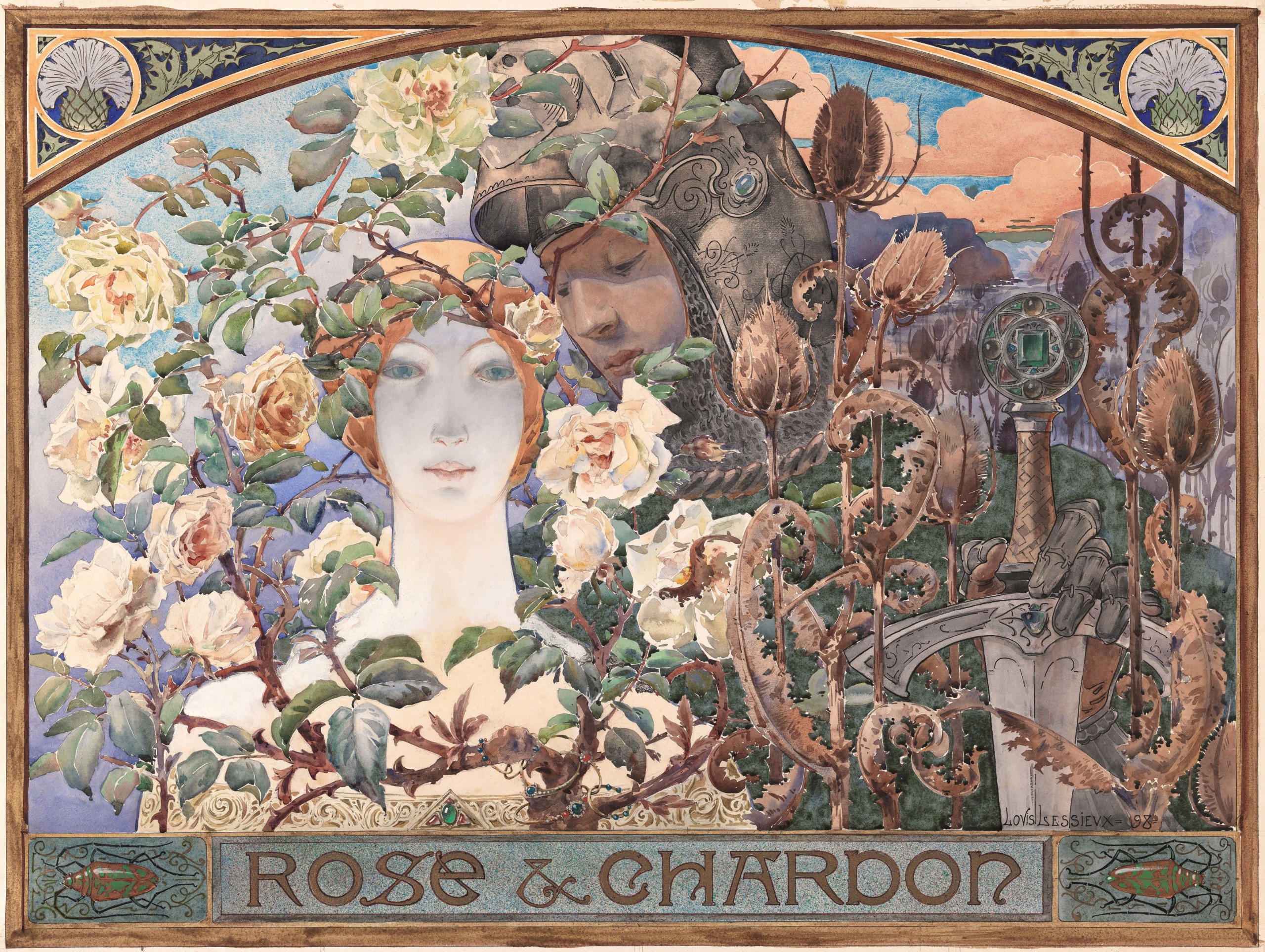
“Rose and Thistle” by Louis Ernest Lessieux, 1898, pen and ink and watercolor on paper.
Weisberg, in his catalog essay, states that Art Nouveau was not popular with the general public but, rather, was sustained by a small group of influential collectors. This is often the case with avant-garde ideas. It is no surprise, then, that the movement was made irrelevant by World War I and subsequent major social shifts.
But isn’t there also a more contemporary relevance to Art Nouveau? Look at those depictions of plants and the natural world across a wide variety of media — all without references to extinction, invasive species, wildfires or droughts. The message is one of growth, life and regeneration, and human beings’ close connection to the environment. Art Nouveau is, after all, a triumph of nature. And we can only hope, that in the future, the movement will continue to be seen as a celebration, not as a memento mori.
“The Triumph of Nature: Art Nouveau from the Chrysler Museum of Art” will travel under the auspices of International Art and Artists to eight museums in the United States through January 2027.
The Lightner Museum is at 75 King Street. For more information, www.lightnermuseum.org or 904-824-2874.
[Kay Koeninger is a professor of Art (Art History) at Sinclair College in Dayton, Ohio.]

